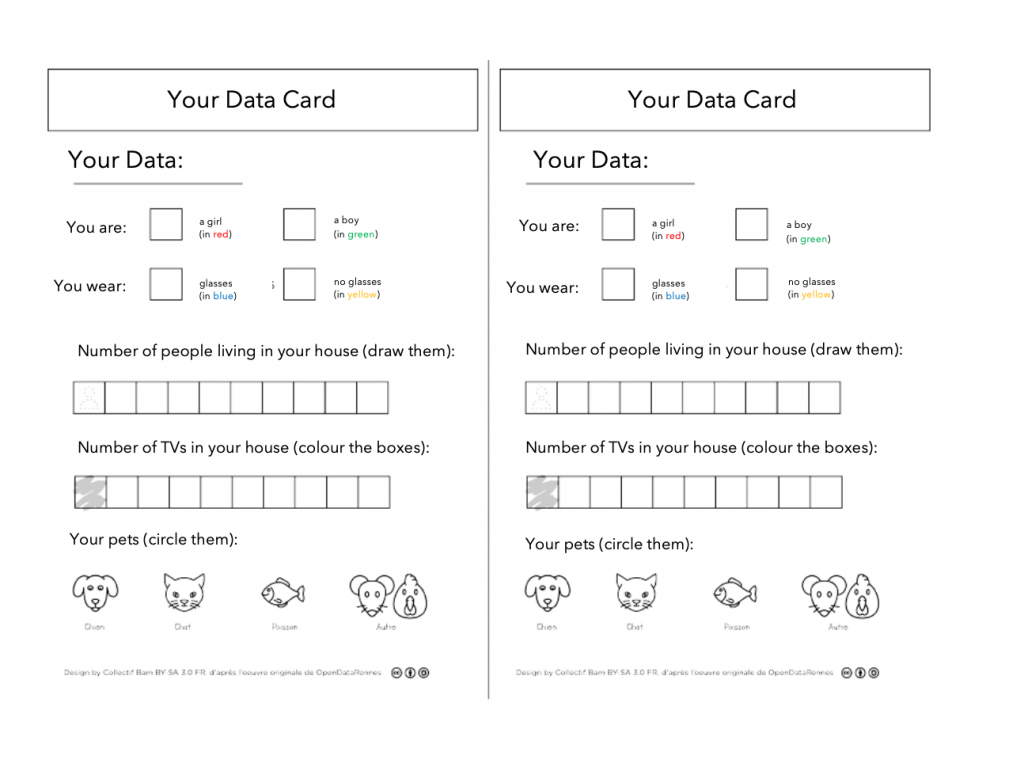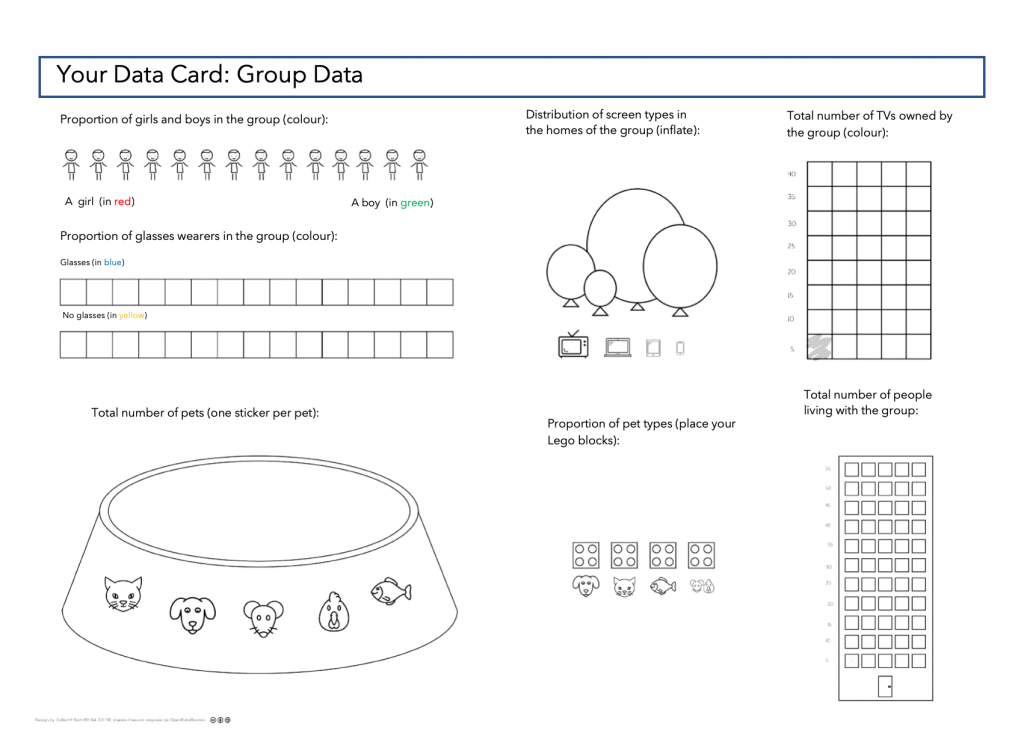This workshop is designed for children. They will learn all about what personal data is, in order to understand how it works in general.
General Objective
Preparation time for facilitator
Competence area
Time needed to complete activity (for learner)
Name of author
Support material needed for training
Resource originally created in
Preparation
Personal data is information that makes up our identity: our name, phone number, photos, and many other things. This workshop aims to make this clear to a young audience in a simple and visual way. It will comprise 2 parts:
- Ask participants to fill in the personal sheet (first document in annex) with their name, age, physical characteristics, etc.)
- Next, in groups, participants will analyse their group data together (using the second document in annex).
Workshop preparation: The first document in the annex needs to be given to each participant. For the second document, one copy per group will suffice. Feel free to print extra copies in case mistakes are made however.
Defining personal data
Give a simple definition of data. You could show an example by using an example ID card and going through each personal detail listed on it. Facilitation tip: For more information, we recommend you refer to the workshop plan ‘Reflecting on Personal Data‘.
Understanding data
Give a copy of the first worksheet to each participant. They will need to give the following details:
- gender
- whether they wear glasses
- the number of people that live in their homes
- the number of TVs in their homes
- their pets
These details should be filled in on the worksheet they each receive. Leave them some time to do this and decorate their sheet how they wish. Once finished, tell them to look at each other’s work.
Facilitation tips: Walk around while this is going on and make sure the kids understand and are filling in the information correctly. Make sure they have access to writing/colouring materials.
Comparing data
For this second part of the workshop, the objective is to combine collected data. An individual detail usually does not point to much. However, when data is combined they become much more interesting. The groups will combine their data — a little like what happens on Facebook and Google but on a much smaller scale and no commercial intent!
For this part, aside from writing materials, you will need:
- inflatable balloons
- sticker
- lego of four different colours
Give a copy of the group sheet to each group: The idea is this: they will gather each group member’s data and present it visually. They will need to:
- Colour
- a red figure for each girl present
- a green figure for each boy
- Colour
- a blue box for each person who wears glasses
- a yellow box for each person who doesn’t
- Put for one sticker for each pet
- Put a coloured lego on each type of pet. For example, if someone in the group has 4 dogs, and a dog is represented by a red lego, there will be four lego blocks in the grid. Explain that by doing this, they will begin to see proportions. If for example there is a larger red area (representing dogs for example), they will be able to see in a glance that the group collectively has more dogs than cats or birds.
- Colour in one box per household screen. They can count TVs, tablets, phones and computers.
- Inflate coloured balloons that will represent screens proportionally. For example, if there are 8 TVs, 5 tablets, 10 computers and 3 phones, the inflated balloons will be, from largest to smallest: computers, televisions, tablets, phones.
- Colour the number of boxes corresponding to the number of people living in their homes.
Facilitation tips: All instructions are noted on the sheet, but we recommend explaining them out loud. Given that this activity involves numbers, it’s possible some children will struggle. If this happens, we advise counting with them and noting the key figures on the board.
Conclusion
To finish, let them admire their work! Start a discussion on the usefulness of data and the use of comparing personal data. Emphasise that when we go online, without us necessarily knowing it’s happening, a number of actors are harvesting our personal data, often to sell them to companies who will in turn use it for targeted advertising. This happens with Facebook, Google and many other companies and organisations, including the majority of free downloaded for phones for example. The annexes furnished by Open Data Rennes in France. This workshop was inspired by the Collective BAM and distributed under the Creative Commons license CC BY-SA.


